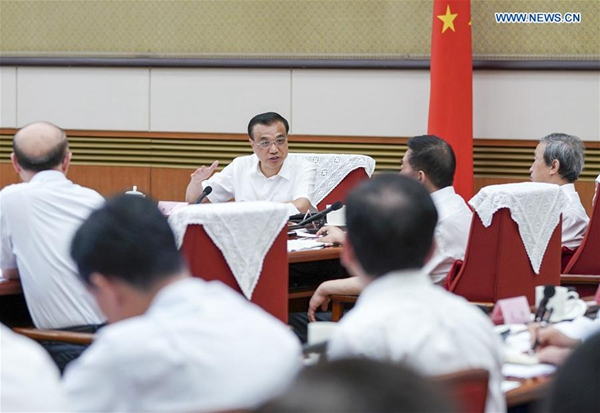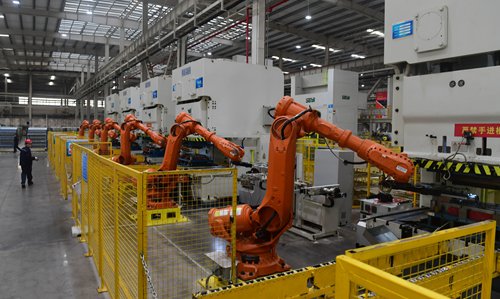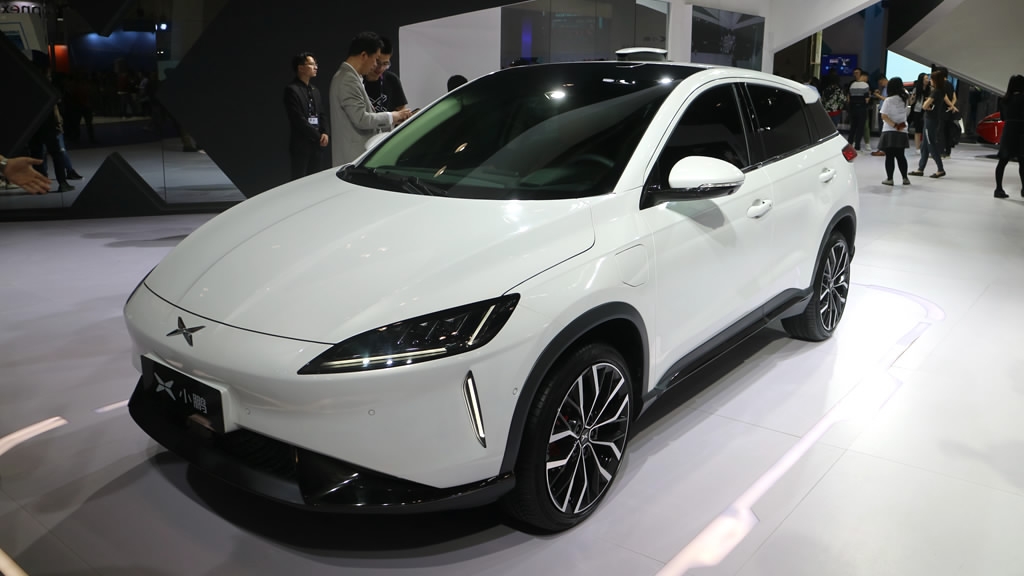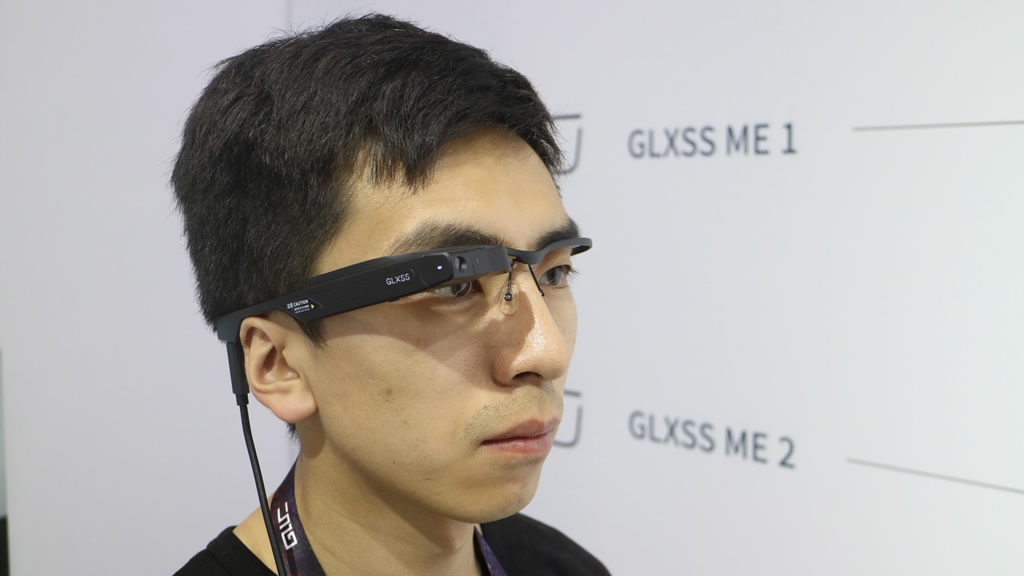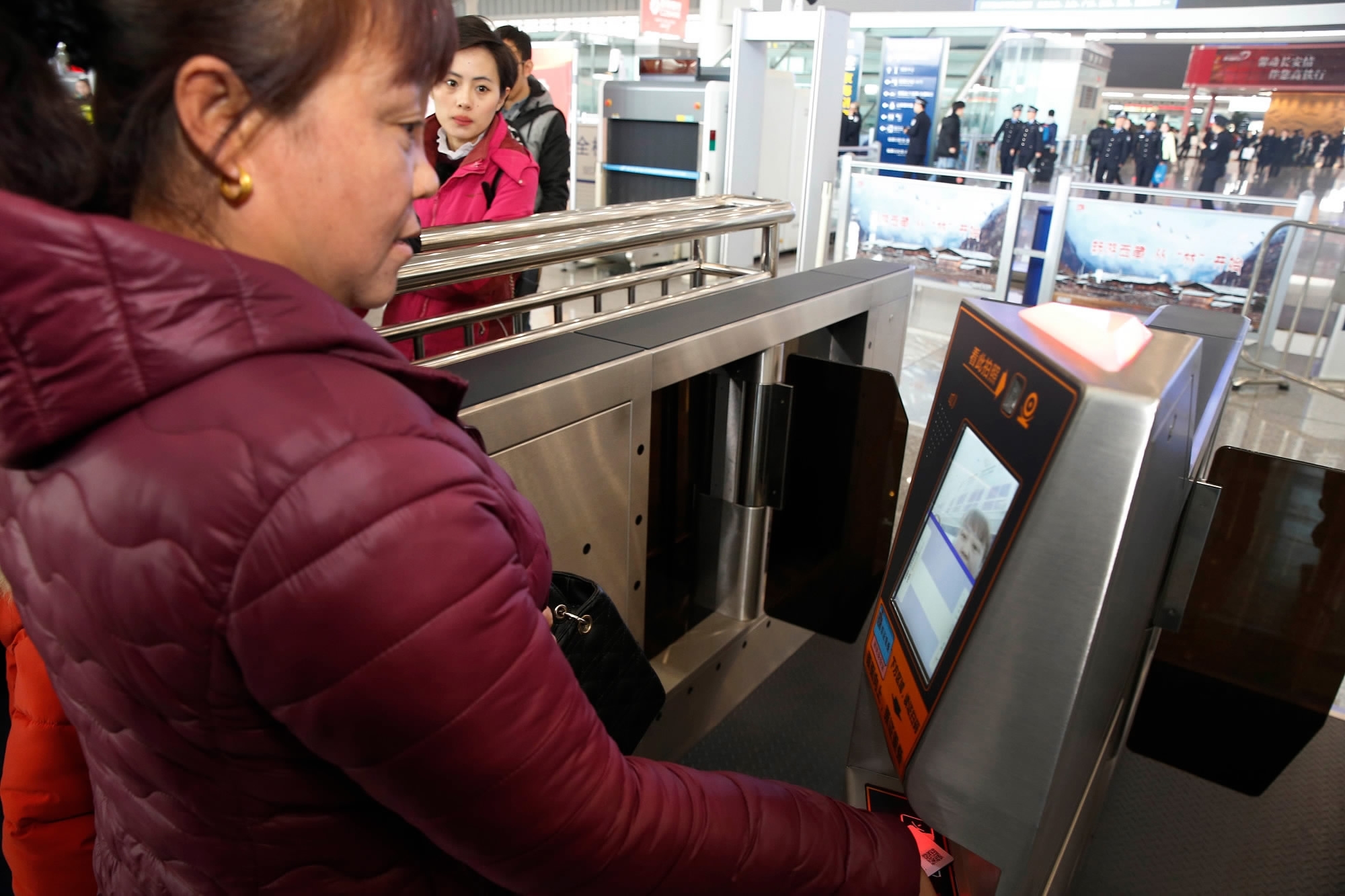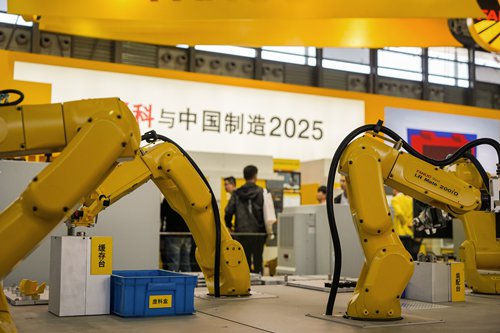TaiShang
ELITE MEMBER

- Joined
- Apr 30, 2014
- Messages
- 27,848
- Reaction score
- 70
- Country
- Location
'Made in China' embraces new brand image
Xinhua, August 22, 2017
The "Made in China" label has long stood for cheap, inferior and low-end products. But today, such a perception no longer holds water.
In recent years, product quality in China is quietly edging up as the country is seeking to shift its growth equation away from exports and investment toward consumption.
A large number of respectable Chinese brands such as Huawei and Xiaomi are emerging rapidly, providing durable, top-notch and fashionable goods from appliances to smartphones to high-speed railcars.
Some high quality Chinese products not only compete with their foreign competitors when entering overseas markets, but have even begun to surpass them.
China's 'golden business card'
Regular delays and overcrowding have become synonymous with riding the subway in Boston, a city home to an extensive but also one of the oldest underground networks in the United States.
But in about two years, Boston riders could soon enjoy more comfortable on state-of-the-art subway cars, which will have larger seats, LCD monitors, CCTV-operated display screens and automatic passenger counting systems.
The subway cars will be designed and built by China's largest high-speed railcar maker CRRC, which is the largest train maker in the world and has been rapidly expanding its presence stateside by winning contracts in major jurisdictions.
"No more sleepless nights with 40-year-old subway cars rattling under the streets of Boston," said Zhou Chuanhe, chairman and president of the CRRC Massachusetts. "Boston is a center for great transportation and should be able to point with pride to its subway cars."
On April 3, the metro train model for Boston made its debut at City Hall Plaza.
From gear and screw assemblies, cold-resistant and heat-resistant technologies to breakthroughs in the integrated control systems, the shiny new railcars are an embodiment of the company's numerous innovative achievements.
"We are confident that CRRC will be able to deliver the vehicles that we need to move the Massachusetts Bay Transportation Authority (MBTA) into the 21st century," said Stephanie Pollack, secretary and CEO of the Massachusetts Transportation Department.
The CRRC, also known as China Railway Rolling Stock Corporation, was formed in 2015 through the merger of China's top two train makers. The Boston contract the company won before the merger was China's first major rail contract in North America, and CRRC built a rail car manufacturing plant in Springfield to fulfill the contract.
Since its accession to the market in 2014, CRRC has so far won 1,359 subway car and commuter train car orders in Boston, Chicago, Los Angeles and Philadelphia.
The past half year alone witnessed 184 subway car orders in Boston and Los Angeles, as well as 45 commuter train car deals in Philadelphia.
"We've ventured out into the foreign markets, successfully innovated our business model, and gained a foothold in the market, where CRRC has become China's 'golden business card,'" said CRRC President Liu Hualong.
The Chinese company will not only bring comfort and convenience to commuters but also will greatly help boost local economic growth and employment.
"From supporting the local economy in Springfield and creating new manufacturing jobs to improving public transportation for Massachusetts commuters and visitors, this project brings with it extensive benefits across the Commonwealth," said Governor of Massachusetts Charlie Baker.
"Since the company entered the United States, we brought benefits such as employment - we provided almost 400 jobs," Liu said in an interview with media in May.
With superior quality and numerous technological innovations, the "Made-in-China" high-speed trains are now witnessing growing popularity in the global market.
CRRC also supplied subway trains to Saudi Arabia to meet the country's transport needs between Riyadh and Mecca, and CRRC-made trains were used in Rio de Janeiro's key Olympic transport metro line.
In April, CRRC agreed a sale of 22 meter-gauge trains to Malaysia and it has also been awarded a contract for a fleet of 11 eight-car trains to operate on Indonesia's Jakarta-Bandung high-speed line.
'Made in China' becomes cool
The rapid development of China's high-speed train industry offers only a glimpse into the rapid transformation and upgrading of "Made in China" products in recent years.
On the back of technological prowess and good value, an increasing number of Chinese companies, including Huawei, Lenovo, Gree, Xiaomi and drone maker DJI-Innovation, have gained footholds in the international market, paving the way for a wave of global Chinese brands.
Take the cell phone industry for example. Chinese smartphone brands, such as Huawei, Oppo and Vivo, have seen dramatic increase in shipments over the past years and ate into the market share of their foreign rivals such as Apple and Samsung.
Advancing rapidly into new markets worldwide, Huawei is now the world's third largest smartphone manufacturer, with a close to 10 percent market share in the first quarter this year. Its products are particularly welcomed in Europe, where the company is growing at an unprecedented pace with better products and a new brand image.
In India, Chinese brands have together accounted for 51 percent share in smartphone segment as of late 2016.
In August 2016, Chinese smartphone vendor ZTE took 9.4 percent of the Russian smartphone market in terms of quantity shares, coming in the second place and exceeding the share of Apple's iPhone for the first time.
Transsion, a Shenzhen-based company whose products are sold under the Tecno, itel and Infinix brand names, has grabbed 40 percent of the African market.
By developing handsets with dual SIM-card slots and optimizing its cameras to better highlight the feature of people with dark skin tones, the smartphone manufacturer, which few Chinese have heard of, has become the top player in Africa's fast growing smartphone market.
The success of Chinese brands can be attributed to their better user experience, faster adoption of 4G technology and greater emphasis on cameras, according to an article on India's Livemint website.
"Chinese smartphones are beautiful, bold and cheap, according to an article on CNN's website. "They typically cost just a couple hundred bucks without a contract, and they offer some unique features American phones don't have."
The title of the article sums it up: "Your next smartphone could be from China."
Xinhua, August 22, 2017
The "Made in China" label has long stood for cheap, inferior and low-end products. But today, such a perception no longer holds water.
In recent years, product quality in China is quietly edging up as the country is seeking to shift its growth equation away from exports and investment toward consumption.
A large number of respectable Chinese brands such as Huawei and Xiaomi are emerging rapidly, providing durable, top-notch and fashionable goods from appliances to smartphones to high-speed railcars.
Some high quality Chinese products not only compete with their foreign competitors when entering overseas markets, but have even begun to surpass them.
China's 'golden business card'
Regular delays and overcrowding have become synonymous with riding the subway in Boston, a city home to an extensive but also one of the oldest underground networks in the United States.
But in about two years, Boston riders could soon enjoy more comfortable on state-of-the-art subway cars, which will have larger seats, LCD monitors, CCTV-operated display screens and automatic passenger counting systems.
The subway cars will be designed and built by China's largest high-speed railcar maker CRRC, which is the largest train maker in the world and has been rapidly expanding its presence stateside by winning contracts in major jurisdictions.
"No more sleepless nights with 40-year-old subway cars rattling under the streets of Boston," said Zhou Chuanhe, chairman and president of the CRRC Massachusetts. "Boston is a center for great transportation and should be able to point with pride to its subway cars."
On April 3, the metro train model for Boston made its debut at City Hall Plaza.
From gear and screw assemblies, cold-resistant and heat-resistant technologies to breakthroughs in the integrated control systems, the shiny new railcars are an embodiment of the company's numerous innovative achievements.
"We are confident that CRRC will be able to deliver the vehicles that we need to move the Massachusetts Bay Transportation Authority (MBTA) into the 21st century," said Stephanie Pollack, secretary and CEO of the Massachusetts Transportation Department.
The CRRC, also known as China Railway Rolling Stock Corporation, was formed in 2015 through the merger of China's top two train makers. The Boston contract the company won before the merger was China's first major rail contract in North America, and CRRC built a rail car manufacturing plant in Springfield to fulfill the contract.
Since its accession to the market in 2014, CRRC has so far won 1,359 subway car and commuter train car orders in Boston, Chicago, Los Angeles and Philadelphia.
The past half year alone witnessed 184 subway car orders in Boston and Los Angeles, as well as 45 commuter train car deals in Philadelphia.
"We've ventured out into the foreign markets, successfully innovated our business model, and gained a foothold in the market, where CRRC has become China's 'golden business card,'" said CRRC President Liu Hualong.
The Chinese company will not only bring comfort and convenience to commuters but also will greatly help boost local economic growth and employment.
"From supporting the local economy in Springfield and creating new manufacturing jobs to improving public transportation for Massachusetts commuters and visitors, this project brings with it extensive benefits across the Commonwealth," said Governor of Massachusetts Charlie Baker.
"Since the company entered the United States, we brought benefits such as employment - we provided almost 400 jobs," Liu said in an interview with media in May.
With superior quality and numerous technological innovations, the "Made-in-China" high-speed trains are now witnessing growing popularity in the global market.
CRRC also supplied subway trains to Saudi Arabia to meet the country's transport needs between Riyadh and Mecca, and CRRC-made trains were used in Rio de Janeiro's key Olympic transport metro line.
In April, CRRC agreed a sale of 22 meter-gauge trains to Malaysia and it has also been awarded a contract for a fleet of 11 eight-car trains to operate on Indonesia's Jakarta-Bandung high-speed line.
'Made in China' becomes cool
The rapid development of China's high-speed train industry offers only a glimpse into the rapid transformation and upgrading of "Made in China" products in recent years.
On the back of technological prowess and good value, an increasing number of Chinese companies, including Huawei, Lenovo, Gree, Xiaomi and drone maker DJI-Innovation, have gained footholds in the international market, paving the way for a wave of global Chinese brands.
Take the cell phone industry for example. Chinese smartphone brands, such as Huawei, Oppo and Vivo, have seen dramatic increase in shipments over the past years and ate into the market share of their foreign rivals such as Apple and Samsung.
Advancing rapidly into new markets worldwide, Huawei is now the world's third largest smartphone manufacturer, with a close to 10 percent market share in the first quarter this year. Its products are particularly welcomed in Europe, where the company is growing at an unprecedented pace with better products and a new brand image.
In India, Chinese brands have together accounted for 51 percent share in smartphone segment as of late 2016.
In August 2016, Chinese smartphone vendor ZTE took 9.4 percent of the Russian smartphone market in terms of quantity shares, coming in the second place and exceeding the share of Apple's iPhone for the first time.
Transsion, a Shenzhen-based company whose products are sold under the Tecno, itel and Infinix brand names, has grabbed 40 percent of the African market.
By developing handsets with dual SIM-card slots and optimizing its cameras to better highlight the feature of people with dark skin tones, the smartphone manufacturer, which few Chinese have heard of, has become the top player in Africa's fast growing smartphone market.
The success of Chinese brands can be attributed to their better user experience, faster adoption of 4G technology and greater emphasis on cameras, according to an article on India's Livemint website.
"Chinese smartphones are beautiful, bold and cheap, according to an article on CNN's website. "They typically cost just a couple hundred bucks without a contract, and they offer some unique features American phones don't have."
The title of the article sums it up: "Your next smartphone could be from China."

